Last week I went to the winter exhibition at Melbourne Museum, which this year features the hidden treasures of Afghanistan. Hidden, due to depredations of war, these artefacts were stashed for safety in the bank vaults of the Presidential Palace and rediscovered in 2003.
The exhibition was organised around objects unearthed in four archaeological sites, Tepe Fullol, Ai Khanum, Begram and Tillya Tepe.
From Tepe Fullol there were a golden bowls and goblets.
From Ai Khanum the tops of two Corinthian columns and a wonderful ceremonial plate depicting Cybele being drawn by lions.
Begram was a major centre on the old Silk Road, and diverse artefacts were discovered in a trader’s storage area that had lain undisturbed for centuries, covering Indian, Egyptian, Greek and Mesopotamian articles, like the painted glass beaker below.
The most gorgeous of the artefacts were those from Tillya Teke, the so called Bactrian Hoard, where Russian archaeologist Victor Sarianidi uncovered the ancient graves of six nomads together with over 21,000 gold artefacts.
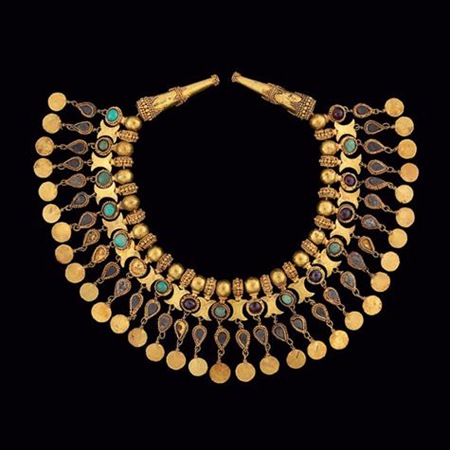
Gold, turquoise, garnet & pyrite necklace or collar for a robe.
It was an interesting exhibition, not only for the exquisite objects, but also for learning something of the culture and history of that tragic, war torn area of the world.
Whilst I was at the Museum, I decided to go and revisit old favourite exhibit Pharlap. He looks grand in his glass case, not moth eaten at all.
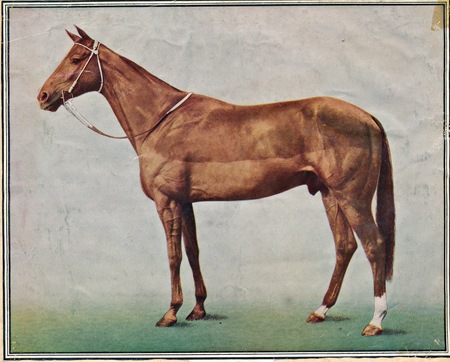
This photo is pretty well an artefact itself having been acquired in the early 1960s.
In light of the recent Black Caviar phenomenon, it was interesting to note the similar scenes at the racetrack, that greeted Pharlap in his day as occurred more recently with the great mare. People came from miles around to see him race as they did for Black Caviar.
No doubt, some time in the future, Black Caviar will have her own display at Melbourne Museum.

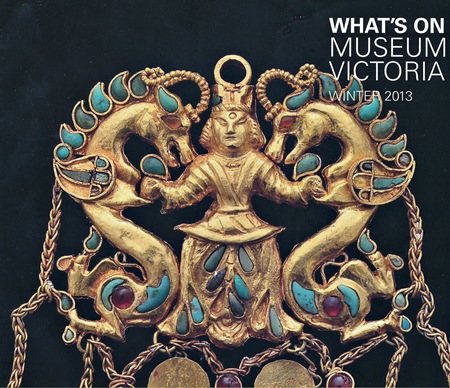
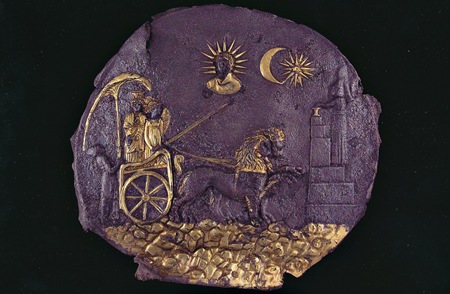
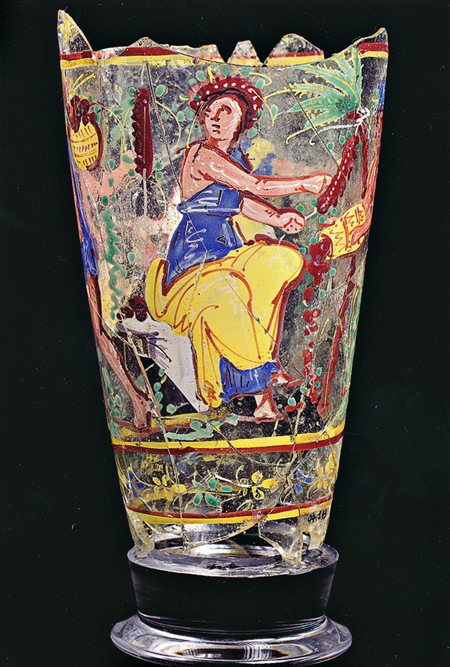
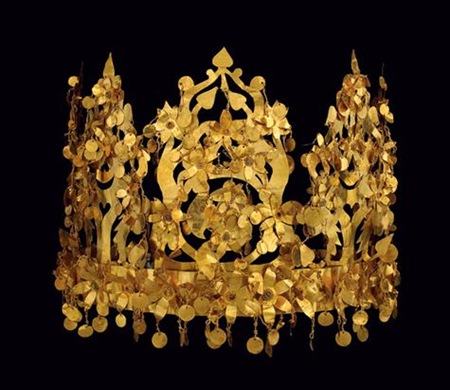

No comments:
Post a Comment